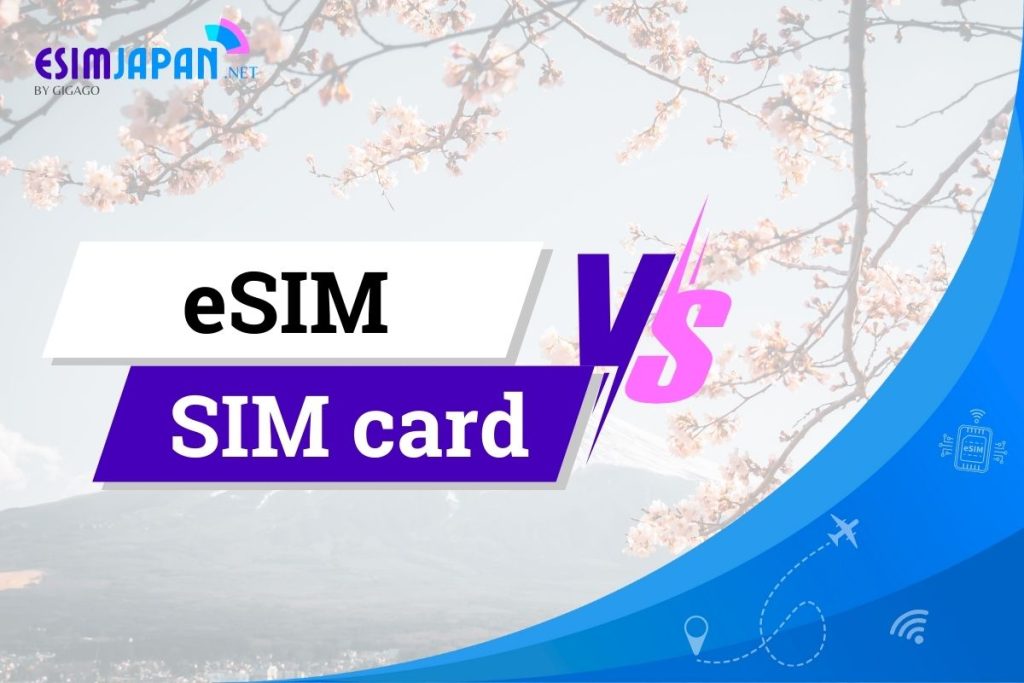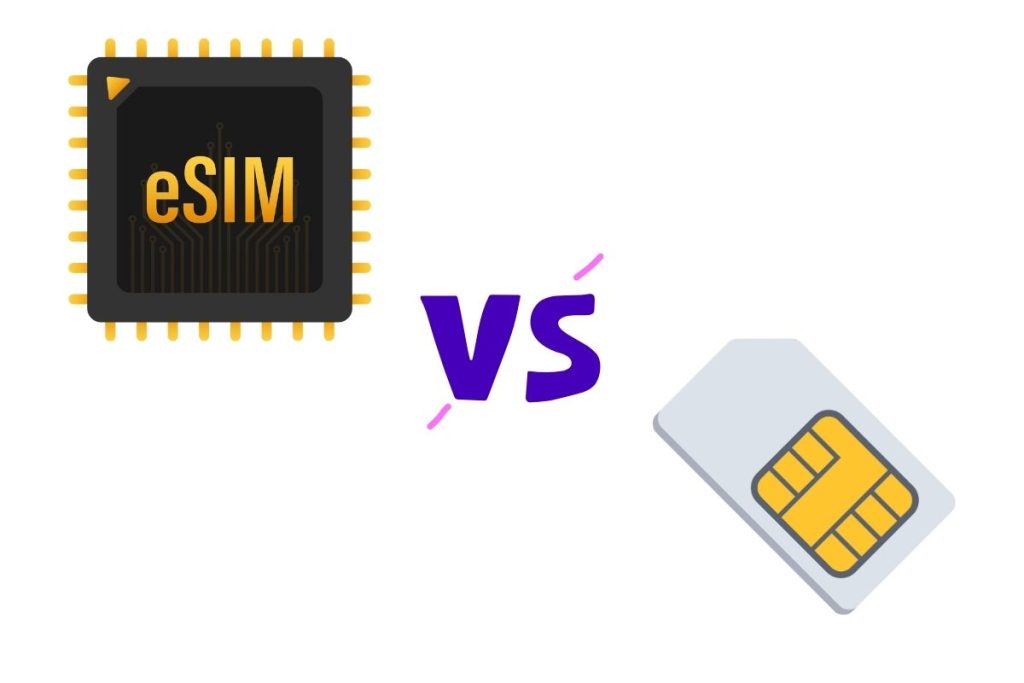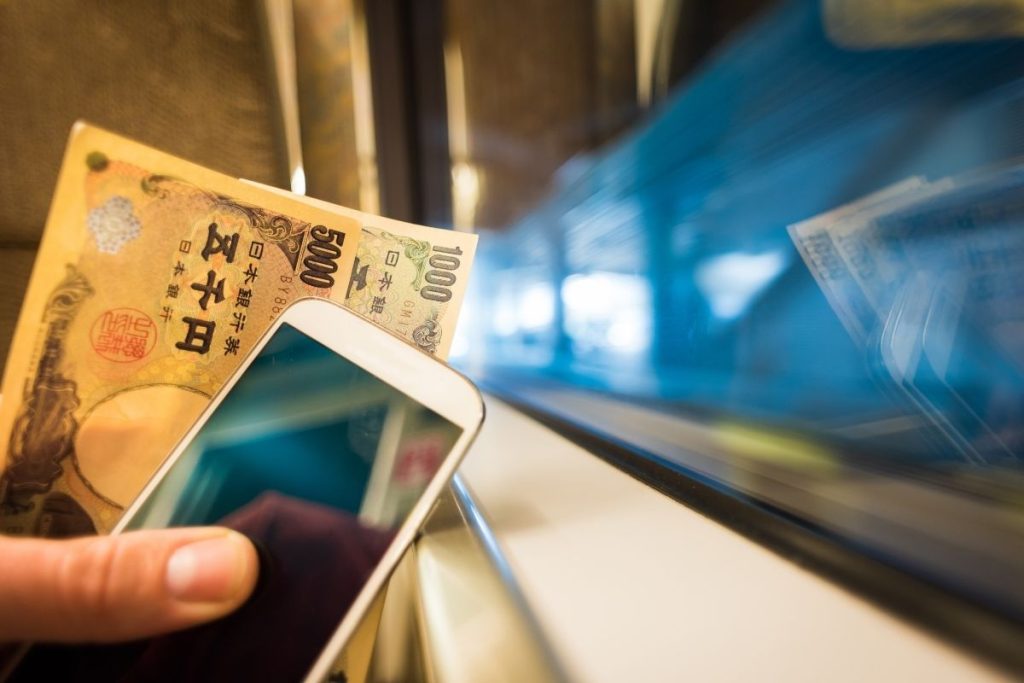
Planning your trip to Japan and wondering about the best internet connection solution? As tourism to Japan continues to surge with over 21.5 million international visitors in the first half of 2025 alone, choosing the right connectivity option has become more crucial than ever. This comprehensive guide will help you make an informed decision between eSIM and traditional SIM cards for your Japanese adventure.
Understanding eSIM vs SIM Card

What is eSIM Technology?
eSIM (Embedded SIM) represents the next evolution in mobile connectivity technology. Unlike traditional plastic SIM cards, an eSIM is a digital SIM that’s permanently embedded into your device’s hardware. This revolutionary technology allows you to activate mobile plans remotely through QR codes or carrier apps, eliminating the need for physical card swapping.
The technology works by storing multiple carrier profiles digitally, enabling seamless switching between networks without physically changing cards. For Japan travelers, this means instant connectivity upon arrival without hunting for SIM card vendors at airports or convenience stores.
Key eSIM features:
- Digital activation through QR codes
- Multiple carrier profile storage
- Remote plan management
- No physical card required
- Instant setup and activation
Traditional SIM Cards in Japan
Physical SIM cards remain the conventional method of accessing Japan’s mobile networks. These small plastic chips contain your subscriber information and must be physically inserted into your device’s SIM tray. While familiar to most travelers, they require in-person purchase, physical handling, and potential language barriers when buying from local vendors.
Traditional SIM features:
- Physical card insertion required
- In-person purchase necessary
- Limited to single carrier per card
- Risk of loss or damage
- Available at airports and convenience stores
2025 Statistics: Why eSIM is Gaining Momentum
Device Compatibility Surge
The eSIM revolution is accelerating rapidly in 2025. According to industry data, 60% of all smartphone sales in 2025 are eSIM-compatible, representing a massive shift from just 20% market penetration in 2021. This surge is driven by major manufacturers like Apple, Samsung, and Google making eSIM standard across their flagship and mid-range devices.
eSIM device growth statistics:
- 2025: 950 million eSIM-compatible devices globally
- 169 smartphones now support eSIM technology (106% increase from 2023)
- 99% of smartwatches and 73% of laptops will support eSIM by end of 2025
- Over 2-3 billion smartphone connections expected to use eSIM technology by 2025
Japan Tourism Growth Impact
Japan’s tourism boom is creating unprecedented demand for seamless connectivity solutions. With 3.9 million visitors in April 2025 alone – a record-breaking month – the need for instant, hassle-free internet access has never been greater.
2025 Japan tourism highlights:
- 21.5 million visitors in first half of 2025
- 24.5% increase compared to same period in 2024
- Projected 40+ million visitors for full year 2025
- Strong growth from major markets: China (+23.6%), South Korea (+21.6%), US (+16.4%)
The correlation between growing tourism and eSIM adoption is clear – modern travelers expect digital-first solutions that eliminate traditional connectivity friction points.
Cost Comparison: eSIM vs SIM Card

Daily Cost Analysis
When examining daily costs, eSIMs consistently offer better value proposition for tourists. Based on current market analysis, eSIM plans provide 15-25% cost savings compared to traditional SIM cards across all duration categories.
| Duration | eSIM Cost (USD) | Physical SIM Cost (USD) | Savings |
| 1-3 Days | $3-12 | $15-25 | 40-50% |
| 1 Week | $17-25 | $20-35 | 15-30% |
| 2 Weeks | $30-40 | $35-50 | 15-20% |
| 1 Month | $50-70 | $60-80 | 10-15% |
Check out daily data eSIM on esimjapan.net:
Weekly and Extended Stay Comparisons
For longer stays, the cost advantage of eSIMs becomes even more pronounced. A two-week eSIM plan with 20GB typically costs $30-40, while equivalent physical SIM options range from $35-50. This represents significant savings, especially when factoring in the convenience premium.
Extended stay benefits:
- No pickup/return fees
- Instant plan extensions
- Multiple carrier options
- No deposit requirements
Hidden Costs
Traditional SIM cards often carry hidden expenses that eSIMs eliminate entirely:
SIM Card hidden costs:
- Airport pickup fees: $5-10
- Late return penalties: $20-50
- Replacement costs if lost: $30-100
- Transportation to pickup locations
- Time costs for in-person transactions
eSIM advantages:
- Zero pickup/return fees
- No physical loss risk
- Instant digital delivery
- Remote troubleshooting support
Choosing Japan eSIM to remove the worrries about hidden fee!
Performance and Coverage Analysis
Network Quality and Speed
Both eSIMs and physical SIM cards access identical network infrastructure in Japan, ensuring equivalent performance when using the same carrier. However, eSIM providers often partner with multiple carriers simultaneously, offering better coverage optimization.
Network performance metrics:
- 4G LTE speeds: 50-100 Mbps average
- 5G speeds: 200-500 Mbps in major cities
- Coverage: 99%+ population coverage
- Latency: 20-40ms typical
Coverage Reliability
Japan’s mobile infrastructure ranks among the world’s best, with comprehensive coverage extending from major metropolitan areas to rural regions. eSIM technology leverages this infrastructure while providing additional flexibility through multi-carrier access.
Coverage advantages:
- Seamless carrier switching
- Automatic network optimization
- Rural area reliability
- Emergency connectivity backup
Convenience Factor: Setup and Usage
eSIM Setup Advantages
The setup process represents eSIM’s greatest advantage over traditional alternatives. Modern travelers can activate their plan before departure, ensuring instant connectivity upon landing in Japan.
eSIM setup process:
- Purchase plan online pre-departure
- Receive QR code via email
- Scan code through device settings
- Instant activation upon arrival
- Total setup time: 2-3 minutes
Setup benefits:
- Pre-departure activation
- No airport queues
- Language barrier elimination
- Instant troubleshooting support
- Multiple device management
SIM Card Limitations
Physical SIM cards require several inconvenient steps that can disrupt travel plans, particularly during peak tourist seasons when airport kiosks experience long queues.
SIM card setup challenges:
- Airport vendor location
- Language barrier navigation
- Physical card handling
- Device configuration requirements
- Limited support hours
Data Usage Recommendations for Japan Travel

Typical Usage Patterns
Understanding data consumption patterns helps travelers choose appropriate plans. Research indicates that tourists typically consume 830MB-1GB daily for standard activities including navigation, translation, and social media.
| Usage Type | Daily Need (GB) | Weekly Need (GB) | Recommended Plan |
| Light (Maps, Messaging) | 0.5-1 | 3-7 | Basic 5-10GB |
| Moderate (Social Media, Photos) | 1-2 | 7-14 | Standard 10-20GB |
| Heavy (Streaming, Video Calls) | 2-3 | 14-21 | Premium 20-50GB |
| Very Heavy (Hotspot, Multiple Devices) | 3-5 | 21-35 | Unlimited or 50GB+ |
Trip Duration Calculations
For the average 14-day Japan stay, travelers should budget 12-14GB total data consumption. However, first-time visitors often use more data due to increased reliance on translation apps, navigation, and research during their trip.
- 1 week: 7-10GB minimum
- 2 weeks: 15-20GB recommended
- 1 month: 30-40GB or unlimited
- Extended stays: Unlimited plans preferred
When to Choose eSIM vs When to Choose SIM Card
Choose eSIM When:
Perfect for modern travelers:
- Your device supports eSIM technology (iPhone XS and newer, recent Android flagships)
- You prefer digital-first solutions
- Traveling for short to medium durations (1-30 days)
- Want instant activation and setup
- Need flexibility to switch plans
- Prefer avoiding physical card management
Ideal user profiles:
- Tech-savvy travelers
- Business professionals
- Solo travelers
- First-time Japan visitors
- Travelers with tight schedules
Choose SIM Card When:
Traditional approach benefits:
- Your device lacks eSIM support
- Extended stays (over 1 month)
- Need voice calling capabilities
- Prefer physical backup options
- Comfortable with manual setup
Best suited for:
- Budget-conscious long-term visitors
- Travelers with older devices
- Those preferring tangible connectivity options
- Extended business assignments
Best eSIM Options for Japan Travelers in 2025
Based on comprehensive testing and user reviews, several eSIM providers excel in the Japanese market. esimjapan.net stands out as a leading choice, offering competitive pricing, reliable coverage, and excellent customer support specifically tailored for international visitors.
Top-rated eSIM features to look for:
- Docomo/SoftBank/au KDDI network access
- 4G/5G speed capabilities
- Flexible data plans (5GB to unlimited)
- Instant activation
- 24/7 customer support
- Competitive pricing
Recommended plans for different needs:
- Short trips (3-7 days): 5-10GB plans
- Standard visits (1-2 weeks): 15-20GB plans
- Extended stays (3-4 weeks): 30GB or unlimited
- Business travel: Unlimited with hotspot capability
For reliable eSIM solutions tailored specifically for Japan travel, explore the comprehensive options available at esimjapan.net, where you’ll find competitively priced plans designed to keep you connected throughout your Japanese adventure.
Conclusion
The choice between eSIM and traditional SIM cards for Japan travel in 2025 is clear for most visitors. eSIM technology offers superior convenience, competitive pricing, and instant activation that aligns perfectly with modern travel expectations. With 60% of smartphones now eSIM-compatible and Japan welcoming record numbers of international visitors, digital connectivity solutions have become the preferred choice.
For travelers with compatible devices, eSIMs provide the optimal balance of cost-effectiveness, convenience, and reliability. The technology eliminates traditional pain points while offering flexibility that traditional SIM cards simply cannot match.
Ready to stay connected in Japan? Discover premium eSIM solutions at EsimJapan.net and ensure seamless connectivity for your upcoming Japanese adventure.
FAQs
Q: Do all smartphones support eSIM technology?
A: No, but 60% of 2025 smartphone sales are eSIM-compatible. iPhones XS and newer, recent Samsung Galaxy models, and Google Pixel devices generally support eSIM.
Q: Can I use both my home SIM and a Japan eSIM simultaneously?
A: Yes, most eSIM-compatible devices support dual SIM functionality, allowing you to maintain your home number while using local data.
Q: How much data do I need for a typical Japan trip?
A: Most travelers use 830MB-1GB daily. For a two-week trip, 15-20GB is recommended to ensure comfortable usage.
Q: Is eSIM more expensive than physical SIM cards?
A: No, eSIMs typically cost 15-25% less than traditional SIM cards when factoring in hidden costs and convenience factors.
Q: What happens if I have connection issues with my eSIM?
A: Reputable eSIM providers offer 24/7 customer support with remote troubleshooting capabilities, often resolving issues faster than physical SIM card support.
